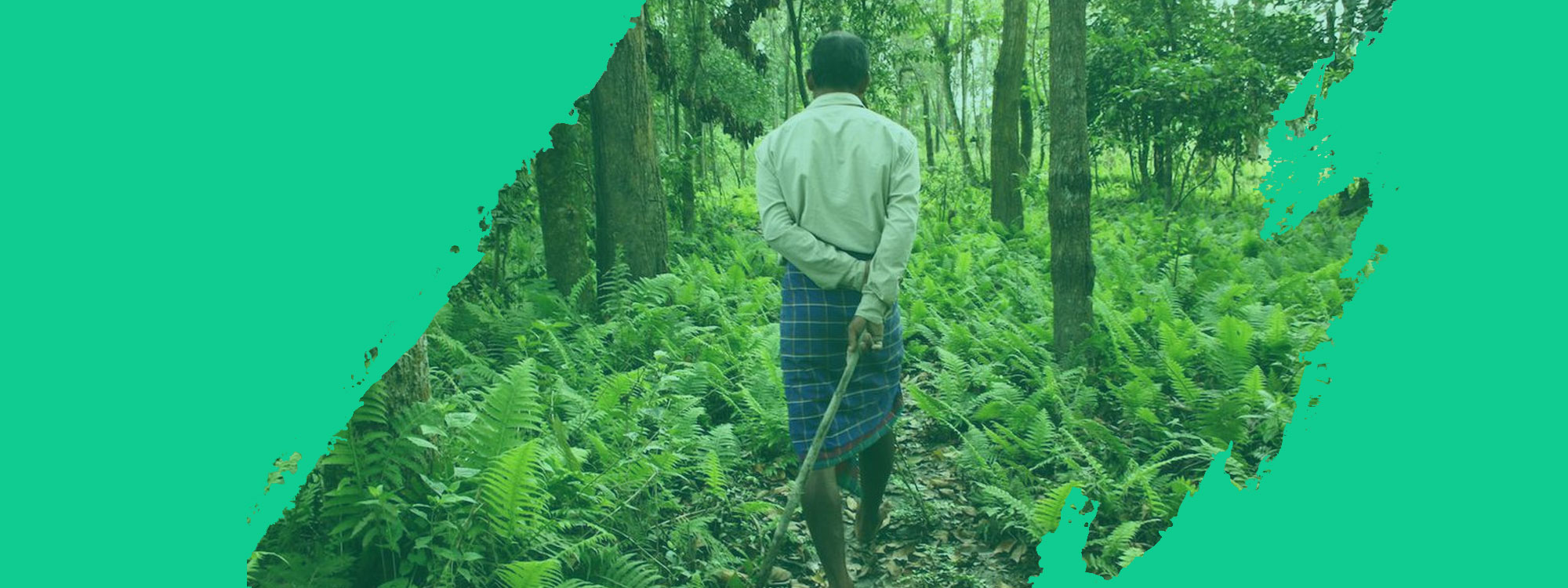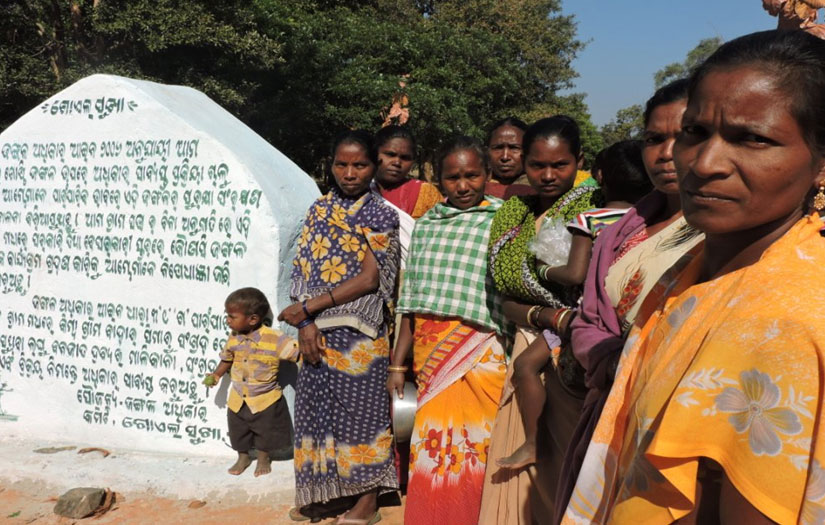
Community
Forest Rights

With an objective of reorienting the members of the partner communities to work with unity and integrity for protection and promotion of livelihood resource base, i.e., land, water and forests.
Training on CFR process three times and follow-up meetings carried on with 156 participants.
Training & orientation meetings are held at 25 villages on the process of conversion of Forest Village to Revenue village .
Impact of our work such as Self-declaration about community forest boundary, Community Forest Right Claim Submisson, Individual Forest Rights (IFR) claim submission
People's control over and accessing into resources like land, water, forests, coasts, minerals, commons and livelihoods:
Introduction: Majority of the tribal people in rural areas in Balisankara and its ajacent Blocks in Sundargarh District have been depending on natural resources like land, forest, water, indigenous seeds of food crops, earning their livelihoods primarily from agriculture and secondly from collection of minor forest produce/NTFP. Thus, they depend upon land, forest and water resources.
94% of the target population are the forest-dwelling tribes (Scheduled Tribes) called Oram, Munda, Khadia, Kisan & Bhuiyans followed by Scheduled Caste (SC) and a few other Backward Caste (OBC) such as Black Smith, who contribute towards the making and /or repairing agricultural implements and helping in agricultural operations and some milkmen households who also supply cow milk, cow-dung and bullocks that are quite useful in traditional agriculture process & outcomes.
With an objective of reorienting the members of the partner communities to work with unity and integrity for protection and promotion of livelihood resource base, i.e., land, water and forests, monthly meetings were organized at the village level, where the issues in connection with the realization of their land rights and forest rights were discussed and necessary strategic actions were taken as follows:
- Training on CFR process three times and follow-up meetings carried on with 156 participants.
- Training & orientation meetings were held at 25 villages on the process of conversion of Forest Village to Revenue village.
Claims submitted for Individual Forest Rights (IFR):
- Due to concerted efforts 2100 households had applied for forest land rights and 1467 have already got individual forest rights (IFR) under Forest Rights Act (FRA). Those who have got less land against their claim they have appealed for second time. In the Second Phase - 132 families appealed in the year 2015.
- 702 numbers of landless people living in Revenue Villages have been identified and facilitated to submit application for homestead land rights. 179 numbers of landless agricultural labours have also applied for agriculture land.
- 222 nos. of cases has been enquired and process is under progress for distribution of RoR.
- Interface meets organized three times with officers of line departments when 177 village leaders participated.
As an outcome of such process of claiming forest rights women have actively participated as their own name and the name of their sons and daughters also mentioned in the claim form. The landless families became aware of their entitlements and submitted their applications too.
Community Forest Rights Claimed
In the year 2015, the people of 34 villages have followed up the process of identification and demarcation of boundary of the forest area that they use for various purposes such as collection of minor forest produce, small timbers, bamboo, kendu leaves and medicinal plants. The villagers also identified traditional pasture land, water bodies and other common land for infrastructure development. It is worth mentioning that these villagers used modern equipments like GPS to measure the total area that they traditionally use.
Impact of our Work

Self-declaration about community forest boundary
Balmati Gudia (37 years), trained as a community volunteer of Goelsukha, has been elected as the member of Forest Right Committee (FRC) as per the Forest Right Act (FRA) that recognises the forest-dependant people's traditional rights to forest and land covered under agriculture that provide livelihood. Balmati and other households of the village have submitted claims, but only 8 of them have been issued title (certificate). Moreover, the whole community have also submitted Community Forest Right (CFR) like 24 other communities that have been trained on how to file the claim. Seeing the administrative delay process, the leaders of Goelsukha convened a special Gram Sabha through FRC, where all the members and villagers were present and took decision for self-declaration about their Community Forest Boundary with a Sign board.
Narrating about such declaration Balmati says, " Myself Balmati Gudia belong to a major tribe in the region called 'Munda' and we all earn our livelihood, at least for 6 months in the year by collection of forest produce such as leaves, fruits, nuts, herbs for consumption and for selling. During our problem analysis process during Micro Level Planning (MLP) we clearly observed that due to deforestation, on one hand and plantation of single species like Teak by the Forest Department of the Government, on the other hand, biodiversity as well as verities of forest produce have been decreasing sharply and adversely impacting on our livelihood. Prioritizing such problems, we the leaders of FRC with full support of our villagers took decision to make a self-declaration about our community protection & management. As per the decision we posted a signboard with demarcation of forest boundary and with a warning that no outside agency or Government can undertake any activity in forest boundary without the consent of the community. We made a Press Release about the Self-Declaration of Community Forest Boundary for protection & management."
Following the example of the community of Goelsukha, 5 such communities in neighboring villages have taken the steps for self-declaration about their respective forest area for protection and management.
After the awareness campaign on land rights many non-tribal landless people came forward to fill up the application Forms for claiming homestead land and agricultural land available in their respective Revenue villages. Thus, 260 claims have been submitted to the concerned Tehasildar (Revenue Department Officer).
- Each village community invited other neighboring villagers to get the consent of the latter so that there should be clarity about the village forest boundaries and that there should not be any dispute concerning the traditional rights of other villagers in the boundary area of the former village. Thus, a number of joint-meetings among the Forest Right Committees (FRC) of neighboring villages were organised before submission of claims through Form-B for claiming rights over Community Forest Resources and Form-C for showing interest in conservation of forests with bio-diversity.
- As the outcome of such community involvement people of 25 villages were involved in the process of identification the boundaries of their respective community forest to facilitate the process conveniently. Then these people have demarcated the boundaries of forest area. They have developed a sense of belongingness that a particular patch of Jungle is their common property resources and they have also duty to protect the same. Nine other village people have their document ready for claiming the CFR.
- Training on NRM conducted by 2 resource persons from Centre of Science for Villages, Wardha imparted skill on value addition to certain wild herbs, fruits and how to collect and process th eNTFP for better prices. The trainees got skill on Watershed Development Programme.
People's Participation in Local Self Governance & Planning for Community Development
Objective & the Process
Under the circumstances of irregularities in implementation of some pro-people Laws, Acts and Entitlements certain training and orientation programmes and follow-up meetings were carried on to enhance knowledge and information level of the target population to ensure people's access to Government Schemes.
Orientation Programme on MGNREGS &PESA:
- Orientation meeting were organized on MGNREGS & labour collective organized in 69 villages, where 3514 labourers have participated and filed job demand.
- Training Programme was conducted for elected members of Panchayat Raj Institution (PRI) and community leaders for operationalization of the provisions of Panchayat Raj Extention to Scheduled Area (PESA) Act.
Follow-up meetings were also organized at the village level for orientation of the adult villagers, who are also the members of Palli Sabha (at village level) and Gram Sabha (at Panchayat Level)
After motivation and persuation the concerned villagers asked the Sarpanch to issue notice for organizing special meetings of Palli Sabha as well as Gram Sabha to discuss and to take necessary steps about the issues related to Forest Rights and works under MGNREGS and other Food Security Schemes.
- As a result of such active as well as effective participation of the concerned villagers the office bearers of PRI took necessary steps for implementation of works under MGNREGS and Govt. Schemes. 709 members of people got wage-works by digging Farm Ponds, Land levelling etc. 148 number of households completed 100 days works. 87 numbers of women-headed households have got job cards newly.
- New job card 243 nos. initiated in 2015.
- Active job card in 2015: 2912 nos.
- 10 to 50 days work done by: 2599 households
- 51 to 80 days work done by: 383 households
- 81 to 100 days work done by: 160 households
- More than 100 days work done by: 148 households
- Training on Kendu leaves organized for 127 participants ad they got information on revised prices of Kendu leaves and other emoluments.
Micro Level Planning
Following a training programme on PRA conducted through collective sharing of experience among the staffs a series of actual PRA process were conducted in 32 villages, where the villagers including young men, women, farmers, adolescents participated in sessions and Focus Group Discussion (FGD) to identify and analyze their needs problems and issues affecting their life. They prioritized the problems and issues and set up strategies and programmes. Thus Micro Level Plans have been prepared in 32 villages.
Further, the concerned villagers took initiatives to call special Palli Sabha as well as Gram Sabha for Ratifiation of the 7 MLPs. As a result of such participatory process the community volunteers got the skill of preparing micro plan and PRA process. The villagers got knowledge on MLP. It is worth mentioning that the Office Bearers of Gram Panchayats named Birkaldihi and Kinjirkela have appreciated the process of Micro-Planning and given assurance to implement such plan.
- During the process of MLP 1733 villagers participated and learned about PRA methods and identified problems and prioritized those.
Women Empowerment
Objective, Process & Outcomes:
With the objective to increase women's effective participation in decision making processes not only at Palli Sabha and Gram Sabha, but also at all levels of society and household levels training programmes were held with cooperation of Resource Persons. Then follow-up meetings were organised at village/community level.
- With the objective of empowering women so that they can take part in decision-making process, village level and Federation level meetings were held.
- Gender sensitization training programs have been organized during the project period. The following points were discussed in these programs-
- Understanding the important roles played by women in agriculture,
- Recognition to Women as farmers and to provide them with Bank loans and Govt. incentives for organic farming,
- Confidence building among the women farmers that they can produce sufficient food grains without using chemical fertilizers & pesticides,
- Increasing the productivity of the land by land development and construction of water harvesting structure such as farm pond, cattle shed, compost pit, vermin compost etc through convergence of Govt. schemes such as MGNREGS,
- Development of Nutritional Garden with plantation of some perennial vegetable plants such as drum stick, papaya, banana, lemon, gourds, etc, which will fetch extra income also.
